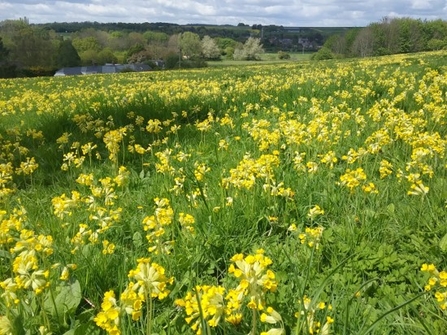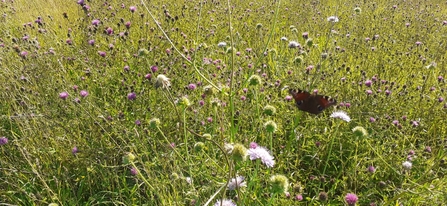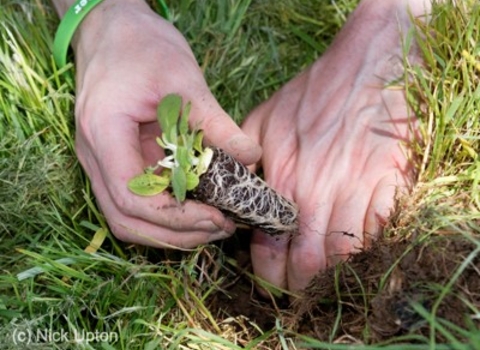Think about it and you will possibly agree that society has a Jekyll and Hyde relationship with nature. We all love to see and enjoy the aesthetics of nature, the lovely flowers that are generated every year, and the general beauty of the landscape. But at the same time society is gradually killing off the natural processes of achieving the delights we all enjoy; the butterflies and bees, the birds and the other wildlife often hidden from our day to day lives.
By chance, in 2002 my wife and I acquired a three acre field, which although cultivated for many years, would originally have been downland, and part of the Marlborough Downs. Being keen gardeners we quickly formed the romantic idea of creating a wildflower meadow. We realised it would be necessary to get on the wavelength of Mother Nature herself, before deciding how to go about it. So we went to a training workshop conducted by a specialist in the subject.
We learnt a lot, but then forgot a lot, before taking the plunge.
We first learnt [Lesson #1] that perennial wild flowers do not like fertile soil and the best way to start creating a wildflower area is to dispose of the fertile top soil and just expose the subsoil. We accepted this in theory, but it was totally impractical for us and way beyond our financial means. So we put this advice to one side, without looking for any alternative [Mistake #1]. Then proceeded with the rest of the advice we received. In brief and with the help of a local farmer`s son, we:
- Killed off all the lush grass that had been cultivated for grazing ie mainly Ryegrass
- Ploughed the field, and waited for the newly exposed seed to germinate, and then killed this off as well.
- Chain harrowed the now bare soil then rolled it to create a smooth surface.
- Researched the correct grass and flower mix for a clay capped calcareous soil ie typical downland
- Lesson #2 wildflower seed will germinate best when only pressed into the soil surface and not covered with soil. So we scattered the seed mix and rolled the surface again.
- Mistake #2, we sowed the seed in the Spring.
Let me briefly expand on both mistakes 1 & 2. Also recognising the fact that given the chance, grass will always dominate wildflowers and, could possibly eradicate them over time.
The only practical alternative I have found - rather than taking off the high fertility topsoil - is to introduce an annual wildflower called Yellow Rattle. Basically it is a parasite to grass and if it colonizes, will suppress the grass overall, leaving the wildflowers to dominate.
Also I didn`t realize that Yellow Rattle must be sown in the Autumn as it needs frost to activate germination.




